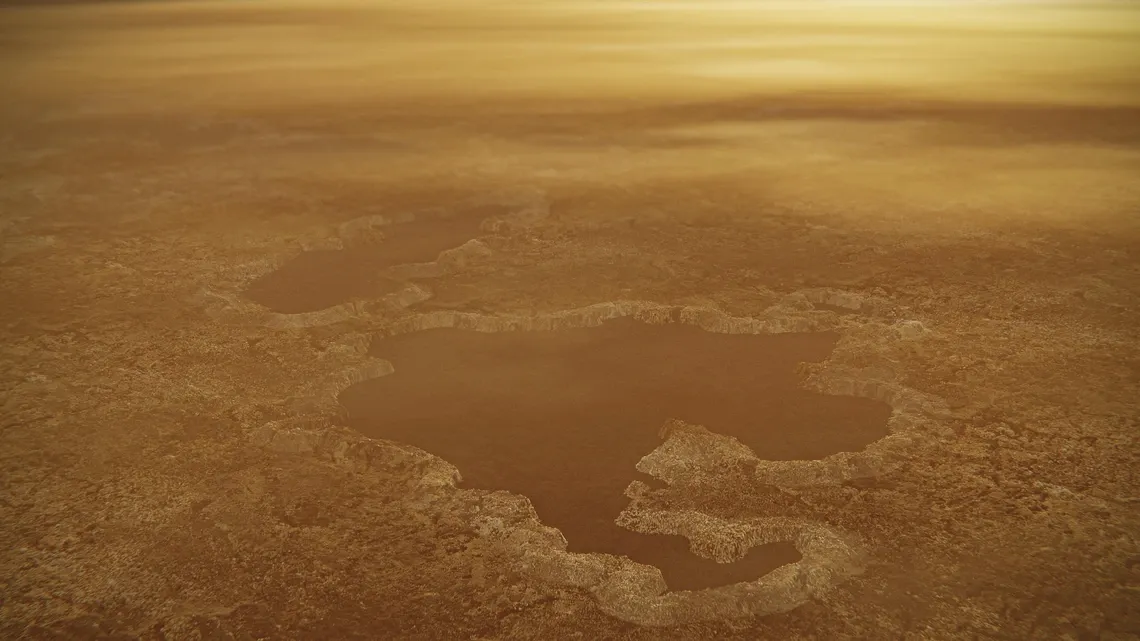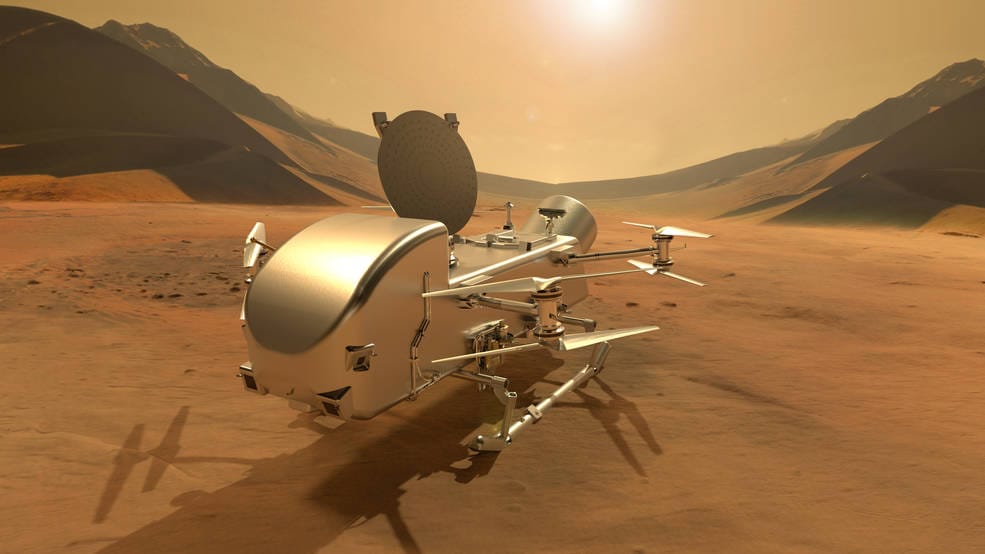Could Titan Harbor Life?
Titan, Saturn's largest moon, is a strange, alien world. Covered in rivers and lakes of liquid methane, icy boulders and dunes of soot-like "sand," its topography has long fascinated scientists and invited speculation on whether lifeforms might lurk beneath the moon's thick, hazy atmosphere.

An international team of researchers co-led by Antonin Affholder at the U of A Department of Ecology and Evolutionary Biology and Peter Higgins at Harvard University's Department of Earth and Planetary sciences set out to develop a realistic scenario of what life on Titan might look like if it does exist, where it is most likely to occur and how much of it might be present.
"In our study, we focus on what makes Titan unique when compared to other icy moons: its plentiful organic content," said Affholder, who is a postdoctoral research associate.

Using bioenergetic modeling, the team found that Titan's subsurface ocean, estimated to be as deep as about 300 miles, may support lifeforms that consume organic material. Published in The Planetary Science Journal, their study concludes that while Titan could possibly harbor simple, microscopic life, it likely could support only a few pounds of biomass overall.
Often described as "Earthlike on the surface, ocean world on the inside," Titan is the target for future exploration via NASA's Dragonfly mission. While much has been speculated about possible scenarios that could give rise to living organisms on Titan based on the moon's abundant organic chemistry, previous estimates have suffered from what Affholder considers an overly simplistic approach.
"There has been this sense that because Titan has such abundant organics, there is no shortage of food sources that could sustain life," Affholder said. "We point out that not all of these organic molecules may constitute food sources, the ocean is really big, and there's limited exchange between the ocean and the surface, where all those organics are, so we argue for a more nuanced approach."

At the core of the research lies a "back-to-basics" approach that attempted to come up with a plausible scenario for life on Titan that assumed one of the simplest and most remarkable of all biological metabolic processes: fermentation. Familiar to Earthlings for its use in sourdough breadmaking, beer brewing and – less desirably – its role in spoiling forgotten leftovers, fermentation only requires organic molecules, but no "oxidant" such as oxygen, a crucial requirement for other metabolic processes, such as respiration.
"Fermentation probably evolved early in the history of Earth's life, and does not require us to open any door into unknown or speculative mechanisms that may or may not have happened on Titan," Affholder said, adding that life on Earth could have first emerged as feeding on organic molecules left over from Earth's formation.
"We asked, could similar microbes exist on Titan?" Affholder said. "If so, what potential does Titan's subsurface ocean have for a biosphere feeding off of the seemingly vast inventory of abiotic organic molecules synthesized in Titan's atmosphere, accumulating at its surface and present in the core?"
The researchers specifically focused on one organic molecule, glycine, the simplest of all known amino acids.
"We know that glycine was relatively abundant in any sort of primordial matter in the solar system," Affholder said. "When you look at asteroids, comets, the clouds of particles and gas from which stars and planets like our solar system form, we find glycine or its precursors in pretty much all those places."
However, computer simulations revealed that only a small fraction of Titan's organic material may be suitable for microbial consumption. Glycine-consuming microbes in Titan's ocean would depend on a steady supply of the amino acid from the surface, through the thick icy shell. Previous work by the same team had shown that meteorites impacting the ice could leave behind "melt pools" of liquid water, which then sink through the ice and deliver surface materials to the ocean.
These findings unlock thrilling possibilities for exploring life’s potential on Titan. Though the study indicates that only a tiny portion of the moon’s organic material—such as the amino acid glycine—might support a modest microbial population, this revelation highlights life’s remarkable ability to endure in the harshest of conditions. The prospect of a sparse biosphere persisting in Titan’s immense subsurface ocean ignites curiosity about the hidden wonders this enigmatic moon may conceal. These insights pave the way for future missions to sharpen our search for life, teasing the exciting notion that Titan’s distinctive chemistry might yet hold undiscovered marvels waiting to be revealed.
For NASA’s upcoming Dragonfly mission, this research helps provide a roadmap for exploration. Rather than viewing the challenge of finding life as searching for a needle in a haystack, scientists can approach Titan with optimism, armed with a clearer understanding of where to look and what to look for. The possibility of life, however small, fuels excitement about discovering novel forms of biology—perhaps not just in the ocean but in other unexpected niches across Titan’s diverse landscape.
Titan remains a beacon of hope in the search for extraterrestrial life. This research highlights the moon’s complexity and inspires a sense of wonder about what lies beneath its hazy atmosphere. As Affholder’s team continues to unravel Titan’s mysteries, their work reminds us that even the smallest signs of life could have profound implications.
